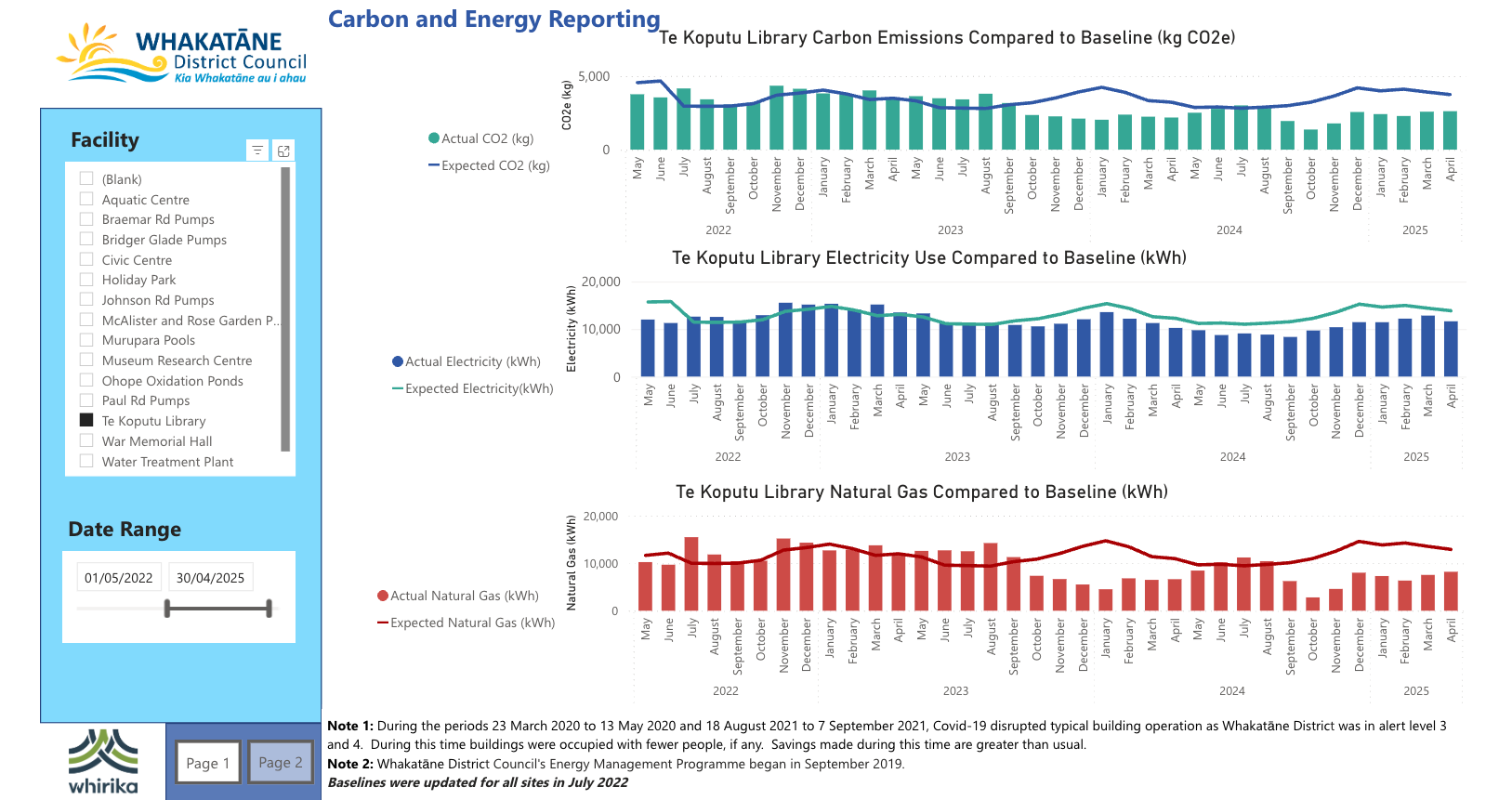Whakatāne District Council: Turning Energy Data Into Action
Cutting Costs and Carbon Through Public Energy Dashboards
Whakatāne District Council takes energy management seriously. It’s committed to leading by example - supporting and inspiring other organisations in the region to take action. A key part of this leadership is being transparent about the steps it’s taking. To help achieve this, Whirika team member Carl Newby has implemented outward-facing energy dashboards to demonstrate what can be achieved through effective energy management.
These online dashboards, accessible via the Whakatāne District Council website, provide clear, up-to-date insights into energy performance across Council facilities - painting an accurate picture of energy use at real points in time. The Council’s Energy Action Group meets bimonthly to review this data and prioritise further actions to drive ongoing reductions.
Real Results:
These dashboards are already delivering measurable benefits. At Te Kōputu a te Whanga a Toi Library and Exhibition Centre, optimising dehumidification controls, a direct result of insights from the dashboards, has significantly cut electricity and gas use - with gas consumption during warmer months dropping sharply. This is an important step towards phasing out gas altogether at the site.
It’s not just carbon emissions that are reducing from these cuts – these initiatives are delivering financial savings too. For example, replacing high lift pumps at the Whakatāne Water Treatment Plant with high-efficiency models has saved around $100,000 in electricity costs over the last two years.
See the results for yourself! You can view the energy dashboard here, or by clicking on the image below.
Want something like this for your organisation?
We design and maintain custom energy dashboards for organisations across Aotearoa - get in touch if you’d like to explore what this could look like for your facilities.


